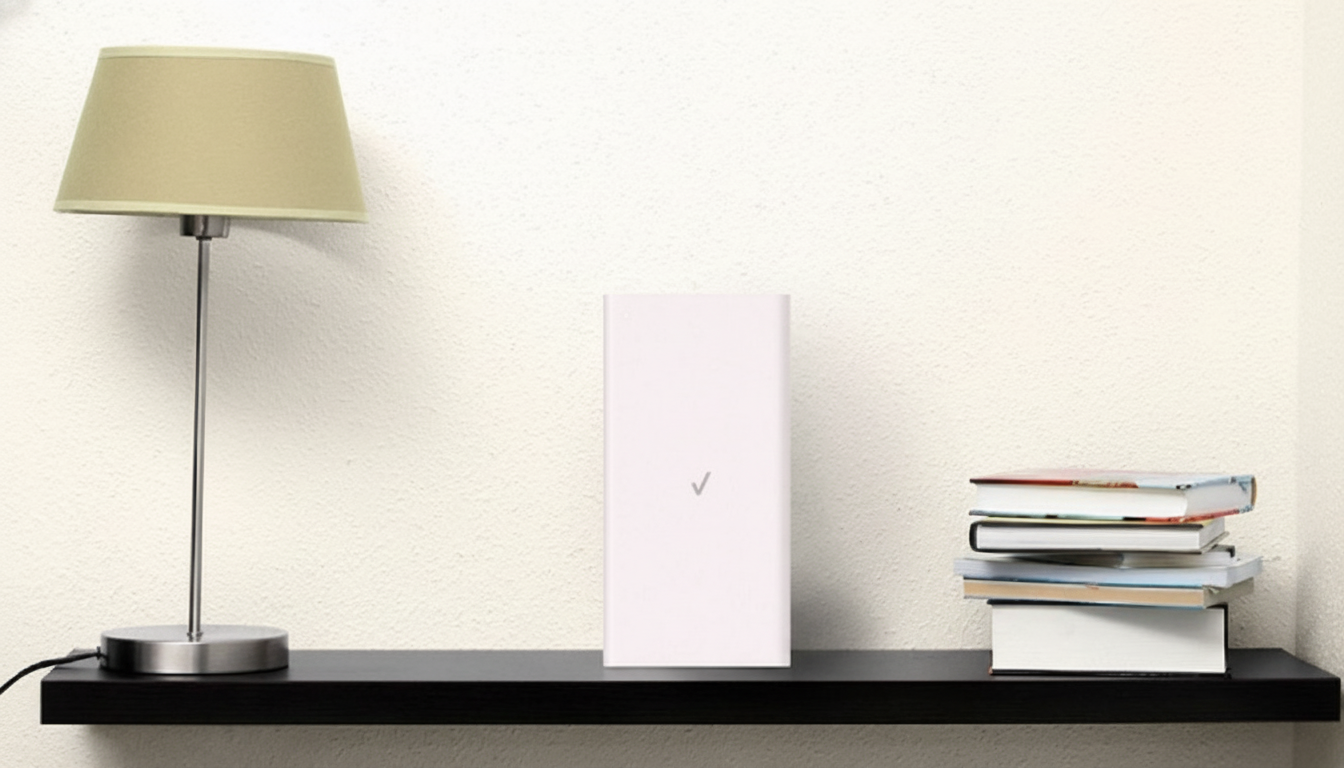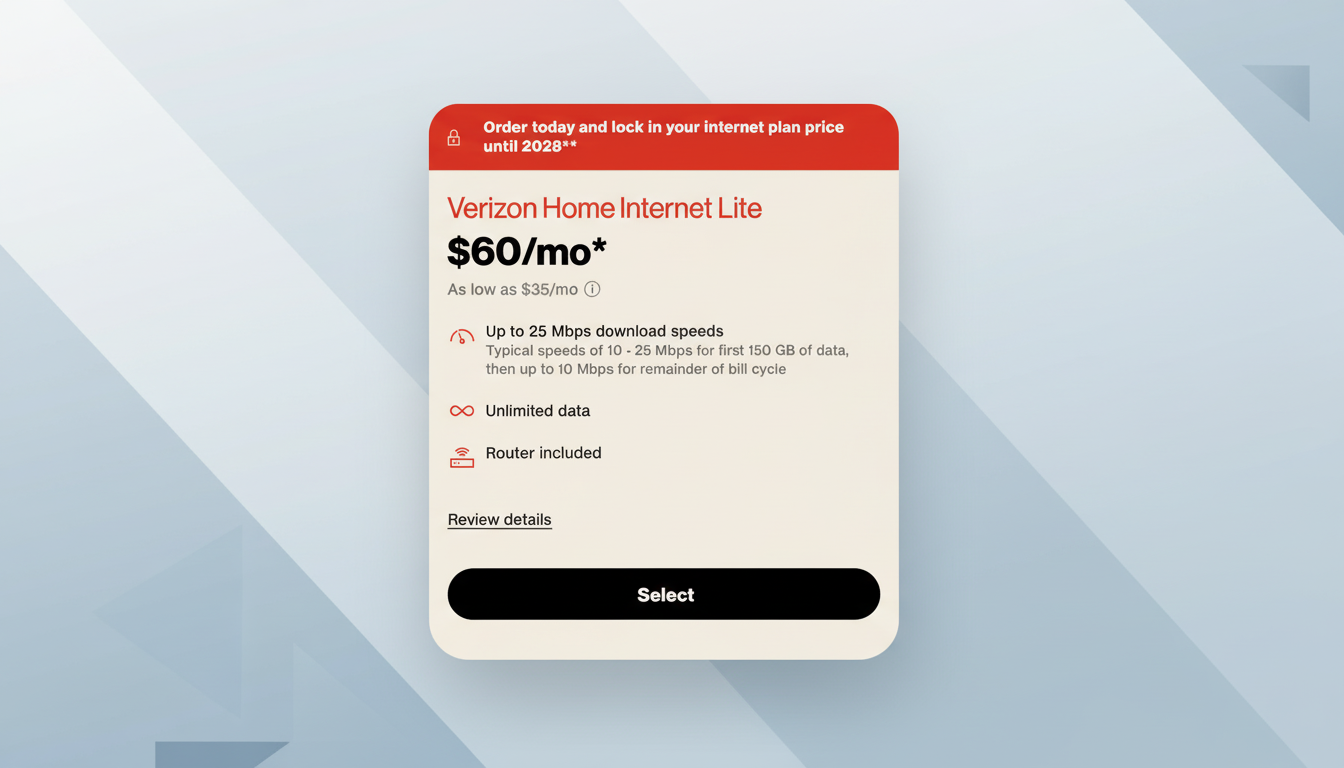Verizon is launching Home Internet Lite, a cellular-based home broadband service that targets households that fall outside the company’s Fios fiber or 5G Home footprints.
The plan, which can be as cheap as $20 a month for eligible customers, is designed to provide rural and underserved areas with an affordable, predictable connection that comes with no data caps and simple installation.
- Who qualifies and where Home Internet Lite is offered
- Speeds, data limits, and included equipment details
- How the Home Internet Lite pricing and discounts break down
- Is 25 Mbps good enough for most everyday use?
- How it compares to rural alternatives like DSL or satellite
- Eligibility and how to begin with Home Internet Lite setup
- Bottom line: is Verizon’s Home Internet Lite worth it?

Who qualifies and where Home Internet Lite is offered
Home Internet Lite is aimed at addresses that are incapable of receiving Verizon Fios or 5G Home Internet services, typically exurban and rural dwellings still dependent on DSL or satellite. Service is available at your service address, not just your ZIP code. If you don’t have access to Verizon’s fiber or 5G Home service at your address, this Lite plan will probably come up as an option when checking potential eligibility.
Pricing is reduced to as little as $20 a month through Verizon Forward for households that are participants in certain federal assistance programs including SNAP, Medicaid, and Lifeline. The plan is available nationwide wherever Verizon’s cellular network provides fixed home service, outside of its faster footprints, the company says.
Speeds, data limits, and included equipment details
Verizon advertises download speeds of 25 Mbps (10 to 25 Mbps) with unlimited data. Experience reduced speeds after your first 150 GB each month at 10 Mbps. Upload speeds will depend on the strength of your signal but will be generally slower than downloads on cell networks.
The company bundles in a router for no additional fee, and it touts an easy self-installation process — no technician visit needed most of the time. Since this service depends on Verizon’s cellular network, performance may vary based on signal strength, local load, and the placement of the router in your home.
How the Home Internet Lite pricing and discounts break down
The regular monthly rate is $60 — before any discounts are applied. The cost reduces by $10 when you sign up for autopay and paper-free billing. Customers who also have an eligible Verizon mobile plan can watch the bill fall to around $35. Verizon is offering a 36-month price lock for those who qualify, dropping the monthly rate to $25 if you accept the long-term offer. With Verizon Forward for qualifying low-income households, the cost is as low as $20. Taxes and fees are different there.
For illustration purposes, a family with Verizon mobile service and autopay might pay $35 a month, while a qualifying household in an assistance program could pay $20. The $25 price-lock option is for customers who value stability more than time. Specific eligibility and stacking rules may vary for your account and address.

Is 25 Mbps good enough for most everyday use?
For light-use households, 25 Mbps is fine — it can do email, web surfing, video calls, and 1-2 HD streams with little friction. The catch is that 150 GB threshold: Beyond that, speeds may slow to as little as 10 Mbps, which probably won’t matter if you’re just doing basic browsing and SD/HD streaming, but it might feel tight for work-from-home households or big software updates.
Context is helpful: OpenVault’s Broadband Insights report found that average United States home data usage has indeed surpassed 600 gigabytes per month and an increasing percentage of homes surpass 1 terabyte. Heavy streamers or gamers would hit 150 GB relatively quickly, in other words. However, unlike strict data caps, the speed is slowed rather than the service cut off — helpful for people on a budget who want to prioritize reliability over peak download or upload performance.
How it compares to rural alternatives like DSL or satellite
For addresses that are stranded on aging DSL technology, Home Internet Lite will deliver comparable or better performance and be easier to understand with a simpler pricing structure and unlimited data. It tends to have lower latency than satellite, which is good for web browsing and video calls. Satellite providers can offer faster bursts of speed, but are generally more expensive and the service can slow down during peak times; weather is also a factor.
When available, Verizon’s proprietary 5G Home or fiber — and competing fixed wireless from other carriers — will be faster. The U.S. receives good marks on median fixed broadband speeds, according to Ookla’s Speedtest data, which has those speeds well above 100 Mbps. But Lite is not competing against urban gigabit plans; it’s trying to cover the gap where high-speed options are thin or unaffordable.
Eligibility and how to begin with Home Internet Lite setup
To check whether you qualify, run an address check on Verizon’s site or call customer service. If Fios or 5G Home isn’t available, Home Internet Lite should appear as an option. The bundled router is ready for self-setup; positioning it near a window or up high in your house will allow you to catch the sweetest signal.
If you qualify for Verizon Forward, gather paperwork about programs such as SNAP or Medicaid to get the lowest possible price. Families who already have Verizon mobile service should consider whether they can get bundle discounts or take advantage of the 36-month price guarantee that locks in predictable bills.
Bottom line: is Verizon’s Home Internet Lite worth it?
Home Internet Lite won’t replace fiber internet or robust 5G, but it could be an affordable lifeline that keeps many rural and underserved homes connected to the web at a predictable, steady cost each month. If you can get the $20 rate — or lock in that $25 price tag — this new Verizon offer marks a significant step toward bridging the gap to broadband without busting your budget.

